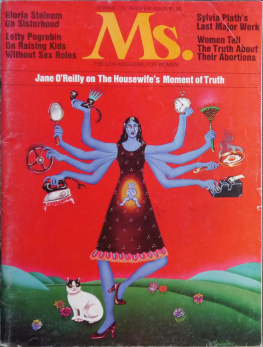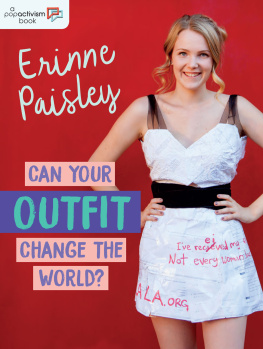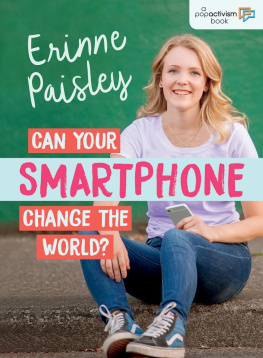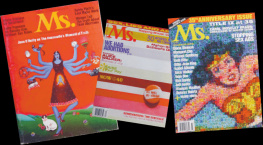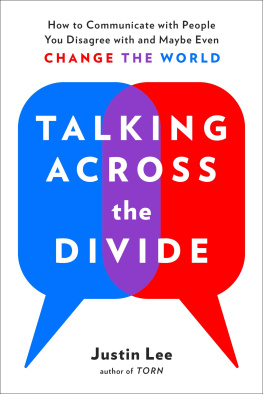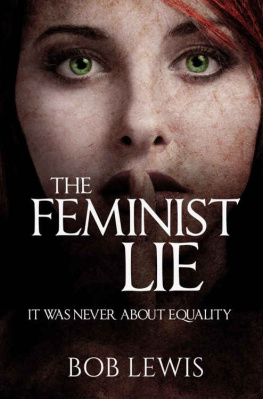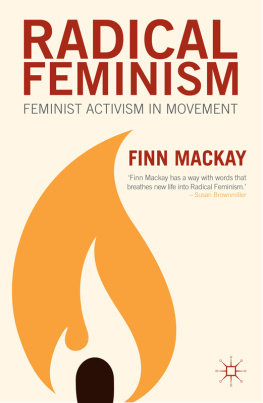Text copyright 2018 Erinne Paisley
All rights reserved. No part of this publication may be reproduced or transmitted in any form or by any means, electronic or mechanical, including photocopying, recording or by any information storage and retrieval system now known or to be invented, without permission in writing from the publisher.
Cataloguing in Publication information available from Library and Archives Canada
Issued in print and electronic formats.
isbn 978-1-4598-1309-0 (softcover). isbn 978-1-4598-1310-6 (pdf).
isbn 978-1-4598-1311-3 (epub)
First published in the United States, 2018
Library of Congress Control Number: 2018933718
Summary: This work of nonfiction in the PopActivism series for teens looks at the importance of talking about feminism and continuing to fight for equal rights.
Orca Book Publishers gratefully acknowledges the support for its publishing programs provided by the following agencies: the Government of Canada through the Canada Book Fund and the Canada Council for the Arts, and the Province of British Columbia through the BC Arts Council and the Book Publishing Tax Credit.
The author and publisher have made every effort to ensure that the information in this book was correct at the time of publication. The author and publisher do not assume any liability for any loss, damage or disruption caused by errors or omissions. Every effort has been made to trace copyright holders and to obtain their permission for the use of copyrighted material. The publisher apologizes for any errors or omissions and would be grateful if notified of any corrections that should be incorporated in future reprints or editions of this book.
Edited by Sarah N. Harvey
Design by Jenn Playford
Cover and flap images by Ute Muller/fotoartphotography.net
Thank you to Feminist Apparel for providing Erinne with her #FEMINIST T-shirt.
Author photo by Jacklyn Atlas
Ebook by Bright Wing Books (www.brightwing.ca)
orca book publishers
orcabook.com
a different type of education
When I was young my parents taught me a lot about human rights. There are even old pictures of me in my living room with Amnesty International posters in the background. Amnesty International fights all over the world for everyone to have their basic human rights fulfilled no matter their age, gender, nationality, ethnicity or religion. These rights are laid out in detail in the Universal Declaration of Human Rights, which was adopted by the United Nations General Assembly in 1948.
As I got older I learned about the many human rights violations that occur all over the world every day. For example, some people do not have access to clean drinking water. Others are forced into marriage before they are adults. Denial of human rights also often takes the form of physical harm, such as torture or rape. I started to realize that one group of people in particular seemed to suffer from a lot of human rights violations across the globewomen.
This was shocking to me, because I am female! Sure, I have been called bossy, and I realized long ago that girls and women are often expected to act a certain way. But I have never experienced any significant discrimination. And yet all over the world, women are facing human rights violations simply because they are female!
When we had self-directed studies in my middle school, I decided to study human rights violations and womens rights. I learned that less than a third of adolescent girls in sub-Saharan Africa and less than half of adolescent girls in South Asia are enrolled in secondary school. Around two-thirds of illiterate adults are women. Globally, a girl under the age of fifteen gets married every seven seconds. Every seven seconds.
I wanted to be able to help, but I didnt really know how. When I got to high school I began to realize that womens rights issues also affected me. People had fought in the past for a womans right to vote and to control her own body, and for pay equity. But the fight is far from over. Women still make far less than men do while doing the same jobs. Women are still expected to look and act a certain way, and we are still told what we can do with our bodies. As well, according to a national study in the United States, one in four women in college report having survived rape or attempted rape. Facts like these made me aware that the battle for womens rights still needs to be fought all over the world.
Globally, a girl under the age of fifteen gets married every seven seconds.
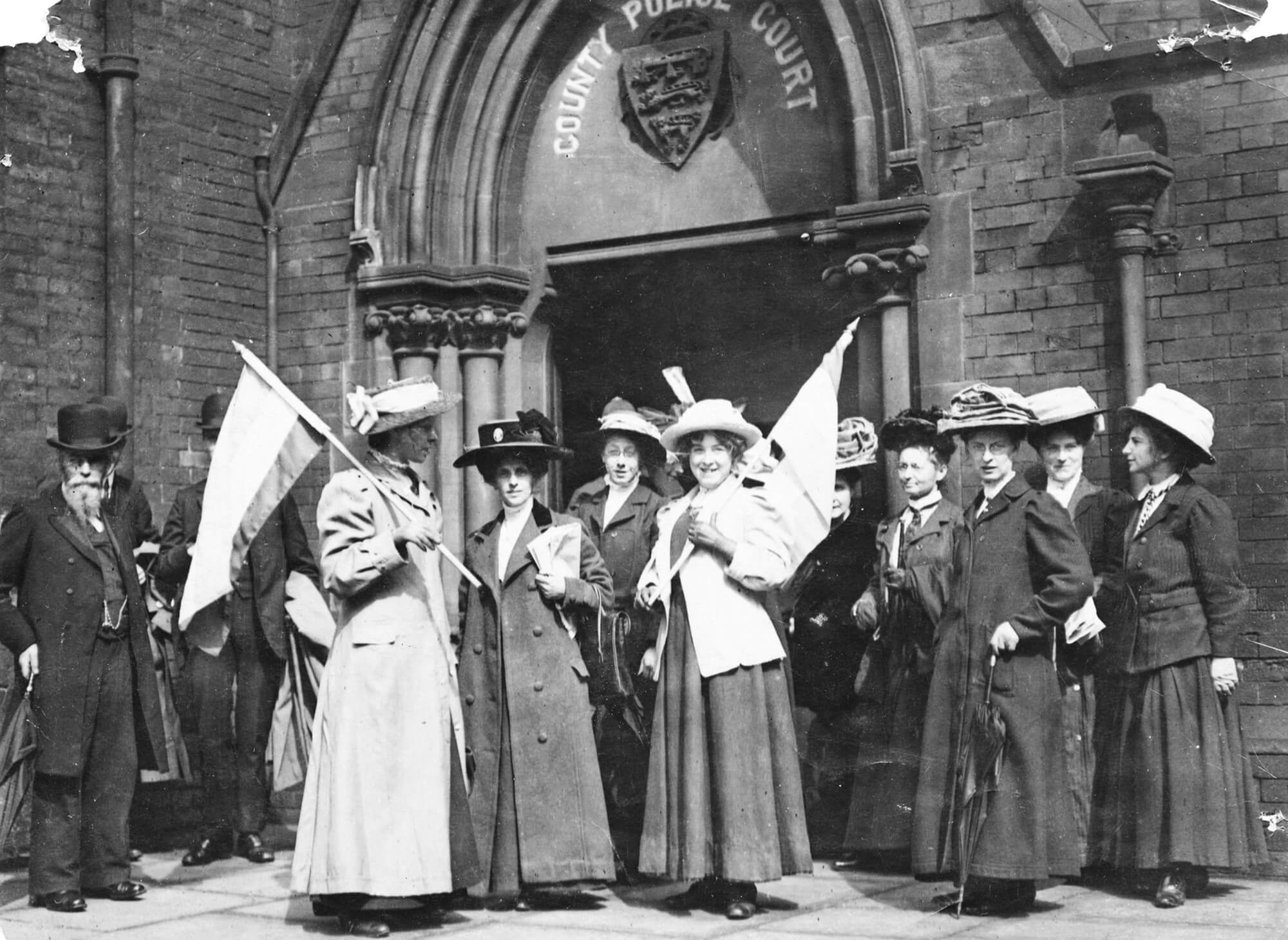
British suffragists demonstrating for the right to vote in 1911. JOHNNY CYPRUS
People fought in the past for a womans right to vote and to control her own body, and for pay equity...

My friend Preet Walia poses during the Womens March in Toronto, ON, January 2017. ERINNE PAISLEY
...But the fight is far from over.
By the end of high school, I knew that the fight for womens rights deals with media images of an ideal body, the lack of educational opportunities for girls around the world, the intersection of race, class and gender, and many other issues. Id also learned about the power that comes when womens rights are upheld. For instance, educating girls has been shown to largely improve economies, which means girls education can literally end poverty.
That is when I definitely knew I was a feminist.
educating girls has been shown to largely improve economies, which means girls education can literally end poverty.
When I graduated from high school in 2015, I thought it made sense to use some of the exciting and celebratory energy around graduation to try and bring extra awareness to the issue of womens educational rights. I created my prom dress out of paper instead of buying a dress, and I wrote on it in red ink Ive received my education. Not every woman has that right. Malala.org. I donated the money I would have spent on a grad dress to the Malala Fund. Every time someone asked about my grad dress, I encouraged them to visit Malala.org to learn more about the fight for womens rights worldwide and donate what they could! I hoped that the money raised would be able to help even just one other girl get the education I had taken for granted.
Then something amazing happenedthe story went viral. You can read more about that story in Can Your Smartphone Change the World? and Can Your Outfit Change the World? The story was shared many, many times, but the reactions came in many different shapes and forms. Most people loved the idea of helping women receive an education and have equal opportunities. But other people did not like it. Some people wrote nasty comments and even threatened me, saying I didnt belong in the classroom, that I was being too loud, that women dont deserve equal opportunities and that it was not my place to speak out about other peoples rights.
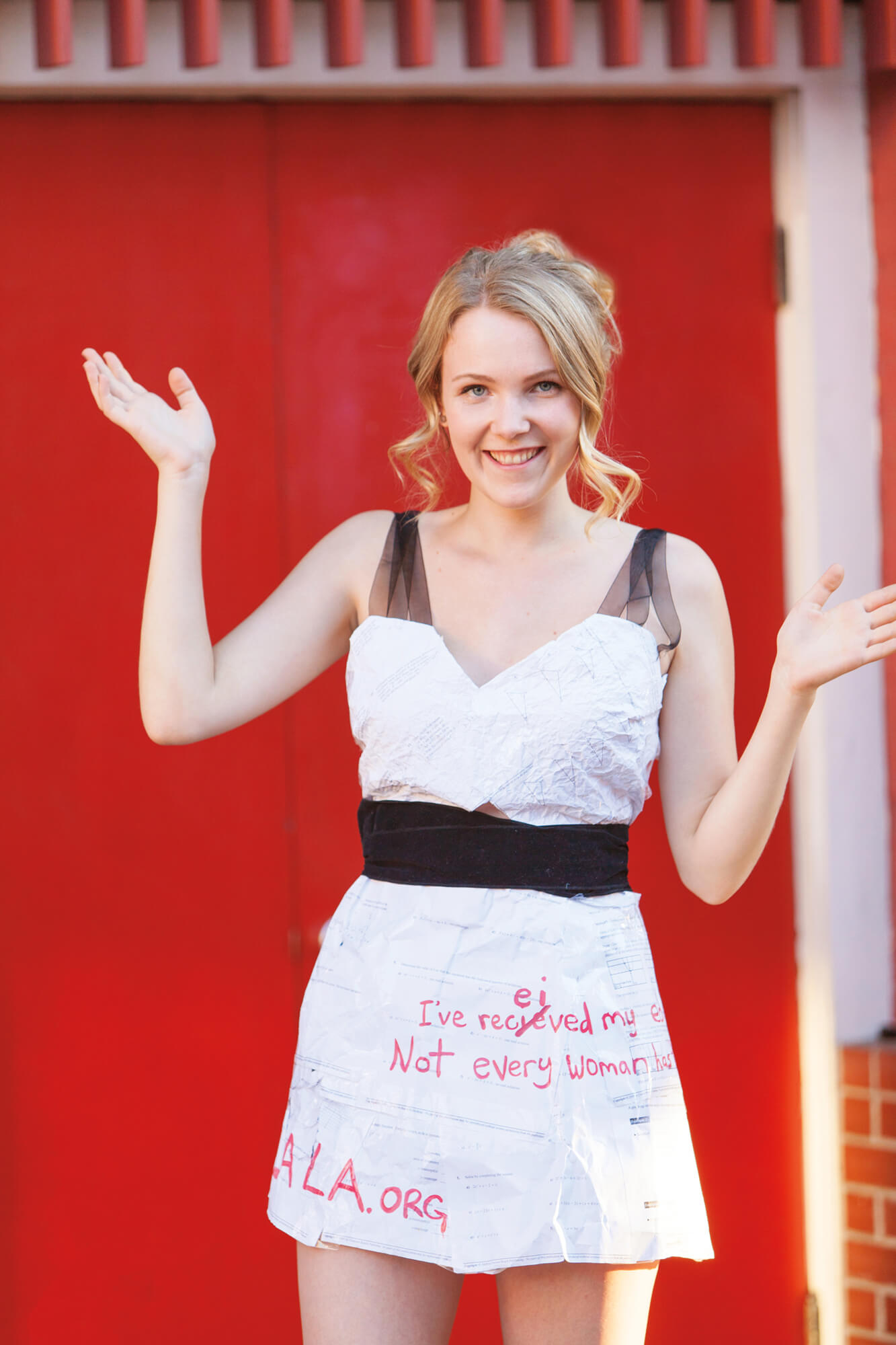
My dress was made out of my Pre-Calculus 11 homework. I wrote on it with red pen to match the corrections that were still on it. UTE MULLER/FOTOARTPHOTOGRAPHY.NET
How can you help create more equal opportunities for everyone? And why do we still need to fight these battles in 2018? Arent the main feminist battles already won?
It was scary and shocking, and it highlighted once again the work that still has to be done!

